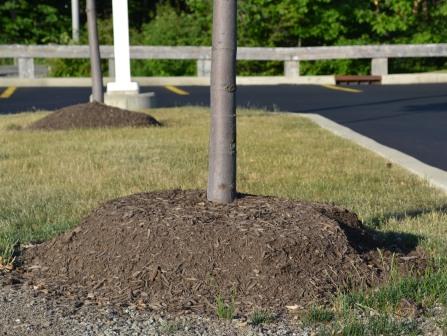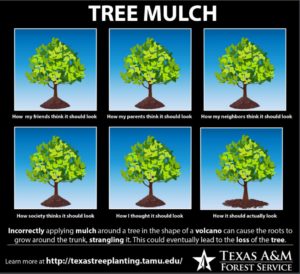Proper mulching benefits your landscape.

Mulching practices vary on who you ask from landscape professionals to a nursery’s staff to homeowners. It is important for you to understand the benefits of mulching and the proper way to apply and use mulch.
So what is mulch? It is used as a protective layer that helps save water, reduces evaporation, stops erosion, controls weeds, and organic mulches can enrich the soil with vital and beneficial nutrients.
Mulch can be classified into two basic categories – organic and inorganic. Organic mulches include a wide variety of natural materials that decompose as vital nutrients to the soil. Inorganic mulches consist of materials that do not decompose such as rocks, fabrics or synthetic mulch.
One of the largest benefits of mulch is the ability to reduce soil moisture loss through evaporation. The barrier that mulch provides reduces the soil’s exposure to the wind and the sun reducing the amount of water loss through evaporation. Proper mulching also helps insulate the ground to keep it cooler in the summer and warmer in the winter. By reducing the drastic swings in temperature, mulch helps promote proper root growth and plant health.
Mulch also helps with erosion control by reducing soil washout from rain or sprinkler systems. Erosion compromises the overall health of your landscape by washing away vital nutrients.
Proper mulching techniques also suppress weed growth. It is recommended that a 3 to 4-inch layer of organic mulch be used to help prevent sunlight from reaching the soil.
A commonly abused mulching practice is the “volcano” mulching of trees. “Volcano” mulching is the piling up mulch around a tree’s trunk. Rather, mulch should form a “donut” around the base of the tree. Proper mulching of a tree helps with the overall health and well-being of a tree.


